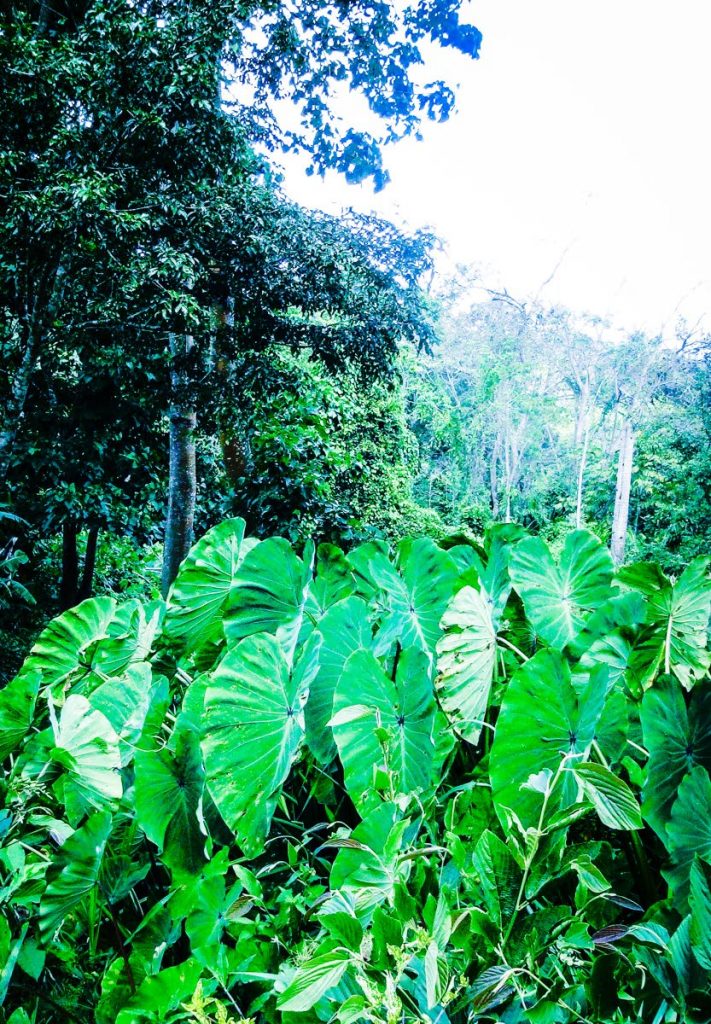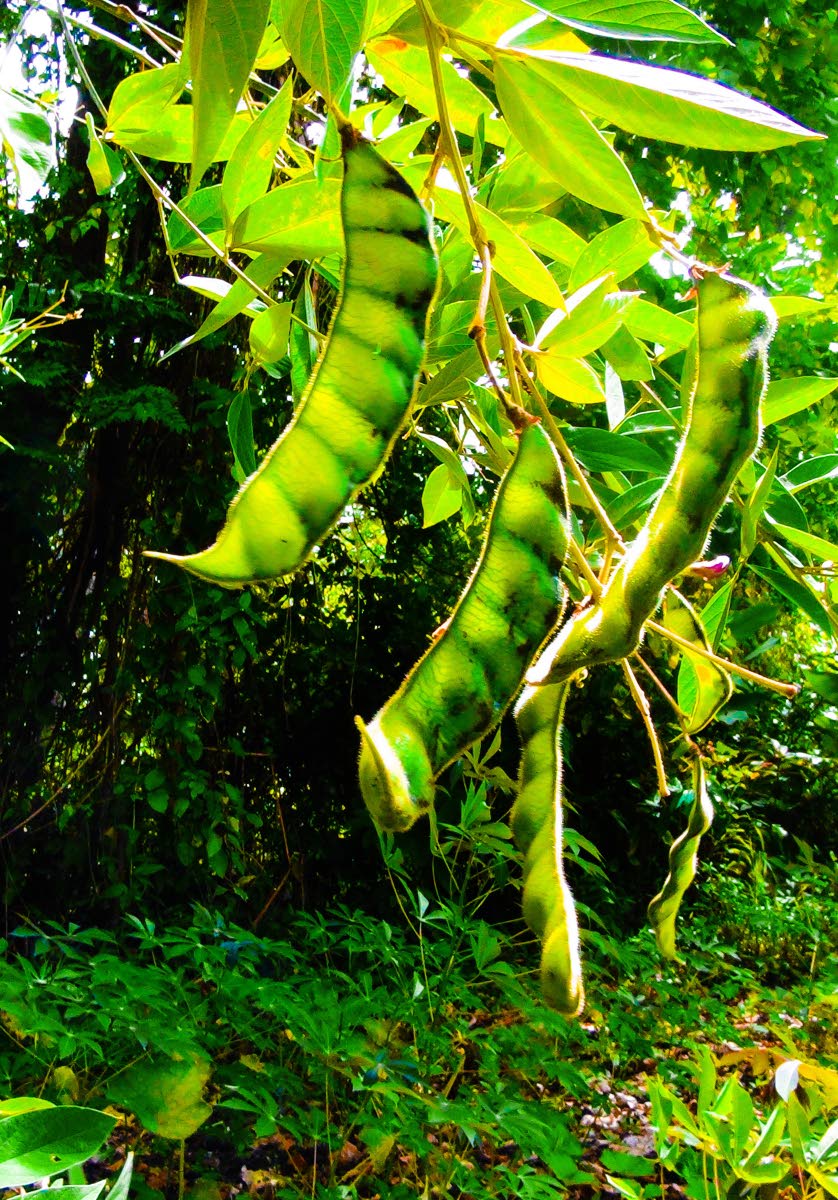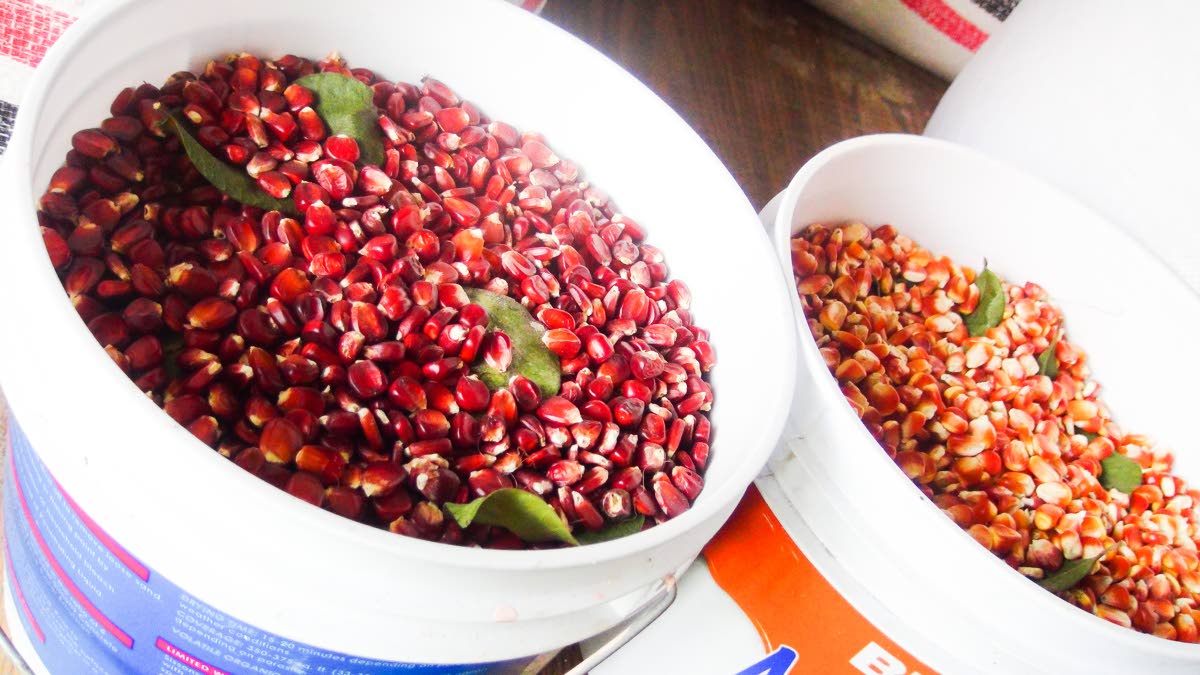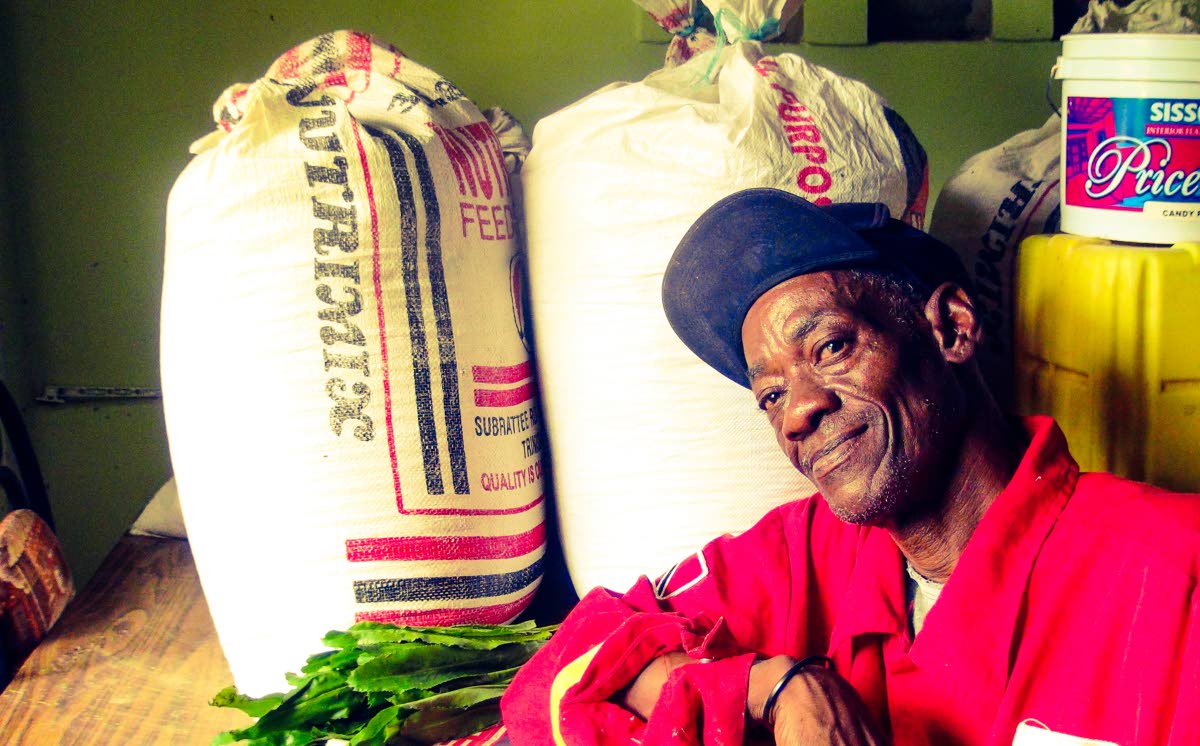‘Back-a-yard’ wisdom

SHEREEN ALI
A rooster with glossy tail feathers was chaperoning plump, clucking hens as we entered John “Darkie” Elliott’s land at Fort George Road, Indian Walk.
“What kind of farming do you do?” I asked him.
“Back-a-yard!” he replied cheerfully.
Elliott, of Merikin descent, is a retired government worker who decided to continue his family tradition of subsistence farming as an act of economy as well as pleasure. The man loves to garden. At least two varieties of hill rice grow on his land, a red-hulled one and a green variety, as well as many other food plants. In his undulating semi-forested backyard, he grows plants to feed himself and his wife, saving on grocery bills while eating a fresh, healthy diet.
What Elliot does is a form of agro-forestry, with more diverse plant varieties growing alongside native tropical forest in a sustainable land-use system that does not strip the earth of forest or poison it with chemical fertilisers. The hill rice is a convenient crop here as it does not need to grow in a watery field; regular earth will do; and once weeding is done, it requires little maintenance, taking its water from natural rainfall. When I visited him, Elliot had already harvested his last crop of hill rice, and would not be planting a new crop until mid-year, but some rice had already reseeded itself from stray fallen grains, and was sending up tall green grass blades.
Elliott tends a wide variety of food plants, including root crops, fruit trees, herbs and the rice. He has a sapodilla tree, a tall tamarind tree, and a curious avocado tree that has decided to grow horizontally down the hill, partially supported by another plant. It seems each plant has its own character, and Elliot is sensitive to the needs of each one.
He grows cassava, breadfruit, chataigne, kimate, banana and keeps a tall, slender plantain tree. There are no large mono-crop areas; mostly, everything is mixed up, with different individual plants growing in their own preferred niche areas. Birds and butterflies fly around. The soil is a rich loam. He grows three kinds of corn – red, yellow, and “creole” corn which is a colourful hybrid of red and yellow.
Elliott also grows herbs for culinary seasoning and medicinal uses. Among them are clumps of long, fragrant chadon beni which adds zest to so many creole dishes; zebapique, a bitter herb used in bush teas to treat the flu, coughs, and in tinctures of vermouth for other ailments; vervine or “breast milk” bush with small purple flowers which is good for nursing mothers, said Elliot; “jigga” bush for “cooling” – “You take it three days before you take a purge” – and Sweet Molly leaf for regular tea.
Elliott pointed out his baby paw paw tree and his citrus plants which include a red cherry tree, a yellow cherry tree, “poteegal” (tangerine) trees and rough-skin lemon plants. He also grows moringa – these days touted as a super food – and guava. And of course there are large groves of dasheen plants (Colocasia Esculenta) scattered throughout the unconventional backyard farm, their huge heart-shaped leaves bobbing in a passing tropical shower. The word dasheen is a corruption of the French “dachine” from “chou de Chine” (China cabbage). You can eat the cooked leaves as callaloo, a popular creole dish flavoured with coconut milk, and the root tubers as a pleasing and very versatile starch in soups, curries, and many other dishes. “You know how you tell dasheen from eddoes? One has a black dot at the centre of the leaf,” Elliot educated me, as he pulled up a few earth-flecked eddoes to give me.
One plot of land had large planting holes; he was in the process of digging up earth to plant a vegetable garden of sweet peppers and tomatoes. Elliott is in his early sixties and is lean and fit from his garden work, as well as having a very grounded, relaxed outlook on life.
Elliott’s expressive face lit up as he showed me treasured plants and explained some of their behaviours and properties. He may not know the botanical name for every single plant, but he seems to know how to keep the plants happy and thriving, and possesses a shared folk knowledge of their remedial and culinary properties. “I enjoy my garden. It keeps me out of trouble,” he says.
He showed me some of his harvested rice, in large bags in a store room. Elliott plants hill rice every May or June, and harvests it at the end of October or in early November. He does not sell his hill rice crop at any market or shop, as people who know him will visit his home to get their supply. I also saw the rich colours of some of his home-grown corn stored in a few gallon-buckets, the plump corn kernels radiating different colours of rustic red, amber yellow, and red-yellow mixes. Elliott completed the tour by giving his outspoken neighbour Leonise a hand of bananas for her family, and leading us to his veranda for some drinks, before he headed off to chat with men from the village. The hot topic that day was bandit Shevon Hodge, shot dead by security on the roof of Francis Fashions/Shoe Locker store in nearby Princes Town at around 3 am on February 24, while trying to rob the shop; he left behind an abandoned bag of Adidas and Nike shoes.
I reflected that if Hodges had been planting sustaining crops like the patient, industrious and practical Elliott, instead of robbing shoe stores for quick profits, he’d probably still be alive.





Comments
"‘Back-a-yard’ wisdom"